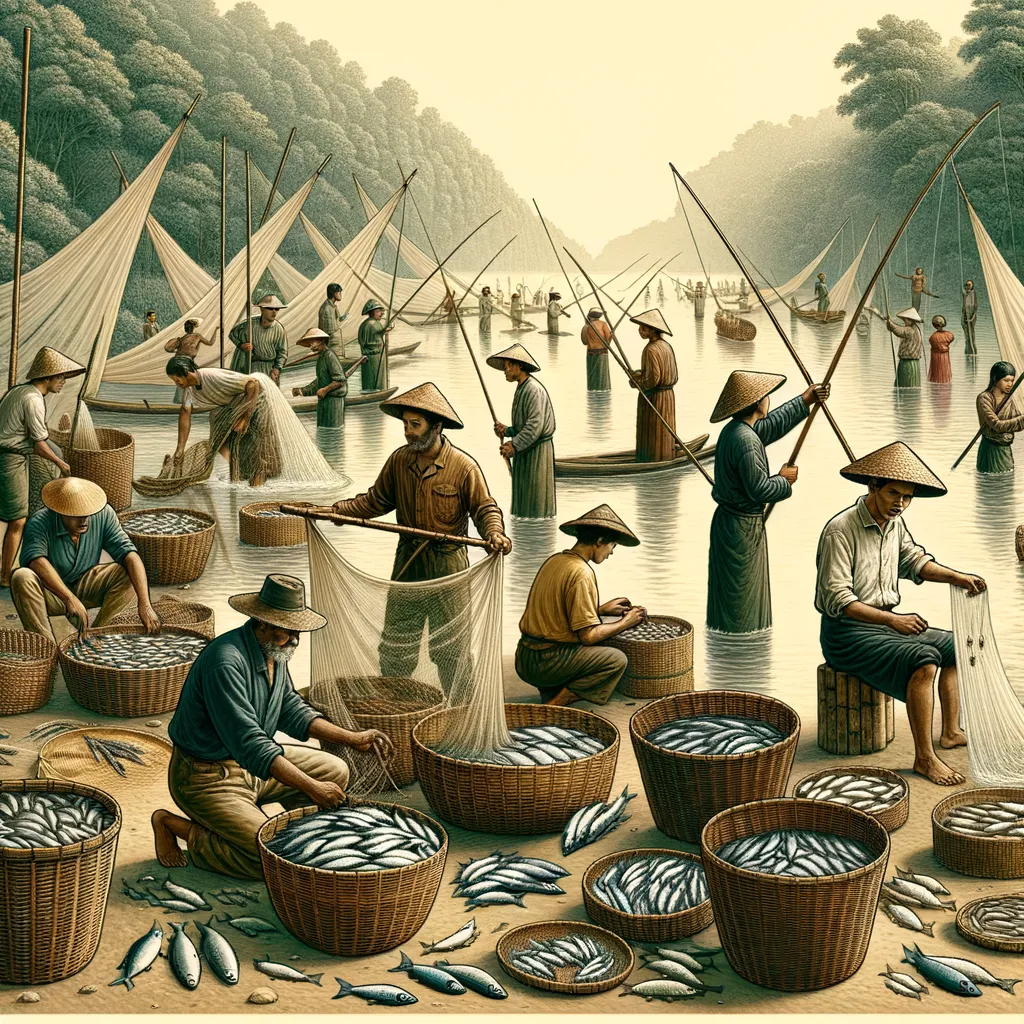A Look Back at Traditional Fishing Techniques: A Guide for Parents
Welcome to our deep dive into the fascinating world of traditional fishing techniques! Whether you’re someone who loves the great outdoors, a parent looking to share unique experiences with your children, or just curious about how our ancestors fished, this guide is for you. Fishing is not only an enjoyable activity but also a way to connect with nature, Camping, and even learn a bit of history. So, let’s embark on this journey back in time and discover the various fishing methods that have fed and fascinated humanity throughout the ages.
Learn more here
about how integrating nature activities, like fishing, into your camping adventures can enrich your family’s outdoor experience.
The Origins of Fishing
Fishing as a means of survival dates back tens of thousands of years, making it one of the oldest practices known to humans. Initially, fishing was purely for sustenance, with early humans using rudimentary tools like spears, nets, and handmade lines. As civilizations evolved, so did fishing techniques, incorporating more sophisticated tools and strategies to catch a variety of fish across the world’s rivers, lakes, and oceans.
Hand Gathering
One of the simplest forms of fishing, hand gathering, is as old as time. This technique involves collecting aquatic animals by hand, whether from the shallows of oceans or the edges of rivers and streams. While it might seem primitive, it requires a deep understanding of marine life behavior, habitat, and an incredible amount of patience. This method is still used today in many parts of the world and can be a fun, hands-on activity for parents and children alike.
Spearfishing
Spearfishing is another ancient technique that involves using a sharp stick or a spear to catch fish. Early humans practiced this method in shallow waters, but as the technology evolved, so did the possibilities. The invention of the spear gun has allowed modern spearfishers to pursue larger fish in deeper waters. However, traditional spearfishing, done in shallow waters, is accessible and provides a thrilling challenge for those willing to try.
Net Fishing
Net fishing represents one of the most significant leaps in the evolution of fishing techniques. The use of nets allowed our ancestors to catch multiple fish at once, significantly increasing the efficiency of their fishing efforts. There are many types of nets used for fishing, each with its own specific use, including cast nets, gillnets, drift nets, and more. Understanding the different types of nets and their uses can be a great learning experience for families interested in the historical aspects of fishing.
This is just the start of our journey into the world of traditional fishing methods. Not only does this practice connect us with the past, but it also teaches us the importance of sustainability, patience, and respect for the environment. As we continue to explore these ancient techniques, we’ll delve deeper into how they’ve shaped the way we interact with our aquatic environments and how they can be part of a fun, educational, and eco-friendly camping experience.
A Guide to Traditional Fishing Techniques for Modern Families
Embark on a fascinating journey through time with this comprehensive guide to traditional fishing techniques, tailored specifically for families. Fishing not only offers a serene escape into nature but also provides a vibrant tapestry of history and conservation lessons. Perfect for parents eager to enrich their family’s outdoor adventures with historical insights and hands-on learning, this guide promises to deepen your appreciation for ancient fishing methods and their relevance today.
5 Key Preparation Tips for Parents
Before diving into the captivating world of traditional fishing techniques, there are a few essential things parents should know to ensure a rewarding and educational experience for the whole family:
- Research Local Regulations and Conservation Efforts: Understanding local fishing regulations is crucial to responsibly enjoy and partake in traditional fishing practices. It teaches children the importance of respecting nature and contributing to conservation efforts.
- Safety Comes First: Prioritize safety by equipping everyone with life jackets when near water, and ensure that all activities are age-appropriate.
- Choose the Right Location: Select a fishing spot that is known for its clean waters and healthy fish population. This not only ensures a better fishing experience but also a healthier one, as the quality of water directly impacts the aquatic life residing in it.
- Embrace the Learning Experience: Use this opportunity to teach your children about the different species of fish, their habitats, and the traditional methods used to catch them. It’s a fantastic way to connect with the environment and learn valuable lessons in patience and perseverance.
- Pack the Essentials: Apart from fishing gear adapted to traditional methods, remember to bring along sunscreen, insect repellent, snacks, and plenty of water to ensure everyone stays comfortable throughout the day.
Diving Deeper into Traditional Fishing Methods
Now that you’re well-prepared, let’s delve deeper into the intriguing world of traditional fishing techniques and explore how they can offer an enriching experience for you and your children:
Understanding the Historical Significance
Traditional fishing techniques offer a window into the cultural and historical aspects of our ancestors’ daily lives. Exploring these methods provides a unique perspective on how our relationship with nature and aquatic life has evolved. Engaging in these time-honored practices not only fosters a connection with our heritage but also encourages a deeper respect for the delicate ecosystems that sustain us.
Appreciating the Ingenuity of Early Fishers
Early fishers had to rely on their intimate knowledge of the environment and the behavior of fish to secure their catch. This ingenuity, born out of necessity, is manifested in the diverse array of fishing techniques developed across different cultures and geographical areas. From the strategic construction of weirs to the skilled crafting of bone hooks and papyrus nets, these innovations highlight human resourcefulness and adaptability.
Experiencing the Techniques Firsthand
Participating in traditional fishing methods allows families to engage in a hands-on learning experience. Whether it’s hand gathering in shallow streams, practicing spearfishing along tranquil shores, or casting nets in bustling rivers, each method offers its own set of challenges and rewards. These activities not only enhance physical skills such as coordination and agility but also teach important life lessons in sustainability, conservation, and the value of patience.
As we continue to explore these ancient fishing methods, let’s remember the crucial roles they play in connecting us with our history, understanding the importance of environmental stewardship, and enjoying meaningful moments with our loved ones. Through this journey, we not only pay homage to the rich heritage of fishing but also contribute to its legacy by passing down valuable knowledge and respect for nature to future generations.
Delving into traditional fishing techniques provides an exceptional opportunity for families to bond, learn, and create lasting memories. By preparing adequately, embracing the learning experience, and immersing ourselves in the practices of our ancestors, we can appreciate the timeless interplay between humans and the natural world. Let this guide serve as your starting point for a family adventure that goes beyond the catch, deepening your connection with both nature and each other.
Disclaimer
The articles available via our website provide general information only and we strongly urge readers to exercise caution and conduct their own thorough research and fact-checking. The information presented should not be taken as absolute truth, and, to the maximum extent permitted by law, we will not be held liable for any inaccuracies or errors in the content. It is essential for individuals to independently verify and validate the information before making any decisions or taking any actions based on the articles.





